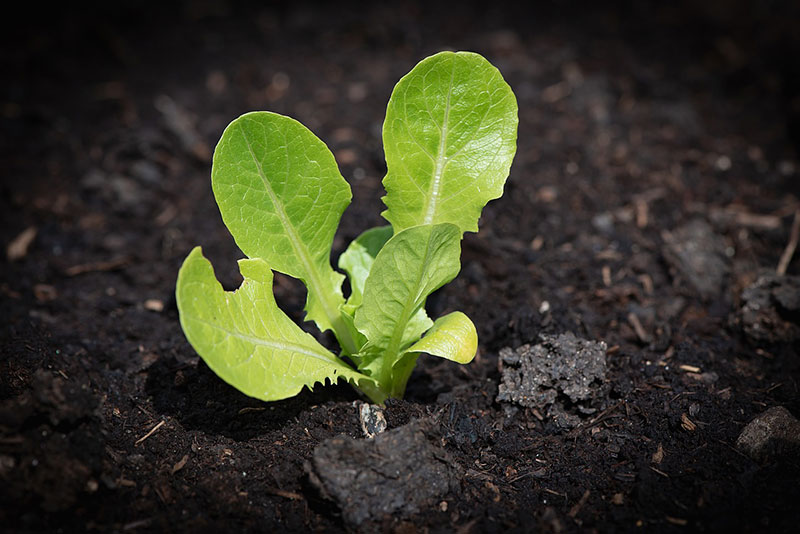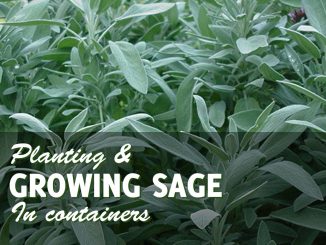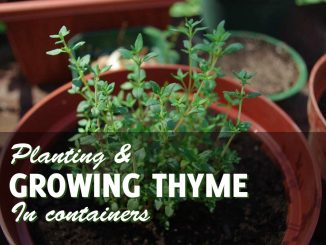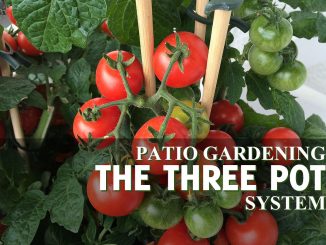
Lettuce is amongst the easiest crops to grow in your vegetable garden but requires a considerable amount of care. Different varieties have different weather preferences. For growing lettuce in containers, the date of your sowing is highly essential for crop growth. As a cool-weather plant, it must be planted two weeks before the last frost date, or roughly around autumn for some varieties. Other types of lettuce can tolerate the heat of the summer sun without bolting.
Before you start growing lettuce in containers
Lettuce seeds can be bought in any gardening store. You can select a specific variety of seeds, or you can choose a mix that has several lettuce varieties in one packet. Whatever type you choose, always make sure that your choice matches your planned sowing dates. When growing lettuce in pots, you have to select a place where the plant will get at least 5 hours of sun in a day. Ideally, the best site will be on the east side of your garden. This way, your lettuce will only receive the cool morning sun and not be dried out for the rest of the day.
Choosing the correct container to grow lettuce
An ideal container for your lettuce will be one that is 6-8 inches deep. How big your container will depend on how many plants you intend to grow. A 12-inch diameter pot or container can hold two lettuces. Some would prefer using a window box as the container is not that deep and can keep lettuce crops neatly in rows. The container must have plenty of holes underneath to help drain excess water. Once you have selected a container, you must stick to it. Even though you are growing lettuce in containers, it is often a mistake to transplant it later.
Preparing a potting mix to grow lettuce in containers
There are pre-prepared sterile potting mixes available in your garden store. The potting mix is a mixture of peat, perlite, and vermiculite. When you are growing lettuce in pots, ideally, the pH should be 6.0-7.0. However, your lettuce will grow perfectly in a light, loamy soil. The temperature should be 60-70 degrees Fahrenheit for your seeds will not germinate if the temperature reaches 80 degrees and above. You can prepare the potting mix with a fertilizer of 15-15-15 or 20-20-20. If you plan to go organic, compost is ideal. Treat your soil with matured compost or compost manure two weeks before planting. Mix the compost thoroughly in the soil for even distribution. A richly fertilized soil can cause the plant to bolt.
Growing lettuce in containers from seed

Once you have chosen your seeds, sow them thinly and directly on your prepared soil. Cover them with prepared soil about ½ inch thick and lightly pat them down. A thinly sowed soil is preferred when growing lettuce in containers for your crops will have a shallow rooting system. Moisten the soil with a fine mist being careful not to wash away the seeds. You can start to thin the seedlings once two true leaves have formed. The distance between seedlings should be 6 inches. Do not plant new seeds near established crops, for they will not grow. If you wish to have a continuous harvesting season all year, plant new seeds instead in a different container to avoid disturbing the established crops as well as not to waste the seeds.
Caring for your container lettuce
It is essential that you keep the soil moist but not wet. An inch of water a week is ideal. Make sure that water them regularly in the same amount daily. Over-watering can make your crops susceptible to a fungal disease that can lessen the amount of yield per season. Depending on the variety, expect to harvest your lettuce greens 20-25 days after planting.
Prevent the crops from bolting by providing shade throughout the summer. A bolted plant means that it has formed flowers and has become woody or leathery. The taste will be compromised, meaning your lettuce would taste bitter and be totally inedible. Mulch your crops during the summer with compost or moss to prevent water loss to address this problem.
Pests and Disease
Common pest problems would be bugs, slugs, and snails. You can spray them with pesticides bought in your local gardening store to control them. Mildew and other fungus are also problems encountered in caring for lettuce. Fungicides can take care of this problem as well. Spray your lettuce with a recommended fungicide every 7-10 days to prevent the fungus from killing your crops.
Weeds are also a problem when growing lettuce. Prevent this by pre-treating your soil before planting. If you see weeds growing, you must remove them immediately. Weeds compete for soil nourishment and can weaken your crop. The earlier you remove the weeds, the better. You can avoid this problem by regularly tilling the soil once your plants have formed an established root system. Be careful when tilling the soil for you may damage the leaves and the roots in the process.
However, lettuce is directly eaten raw, so it is better to go organic. Inspect your crops daily and regularly and Hand-pick your snails and slugs. Some recommend wiping the base with petroleum jelly when growing lettuce in containers. To prevent fungus from growing, make sure that your crop still has adequate ventilation even though it is provided with shade. Remove infected leaves immediately, and if necessary, thin down your crops. Give extra protection by spraying your plants every two weeks with compost tea.
Side-dress your vegetables by placing mature compost at the edge, or by feeding it with compost tea or organic liquid fertilizer. Another way to prevent insects from coming near your lettuce is to line them up with onions and chives. They are perfect insect and caterpillar repellents, so you do not have to worry too much about keeping your crops safe.
Harvesting your container grown lettuce
In some cases, harvesting can take up to 60 days. If you find it difficult to count the days while growing lettuce in pots, you can harvest once the leaves have grown the desired size, usually 4-6 inches. Cut the leaves directly an inch or two above the base or pull out the entire crop. Once you have harvested your plants, wash them thoroughly to remove dirt.
If you are looking for other vegetables to add to your container garden, take a look at me article on growing pumpkins in containers!





Be the first to comment